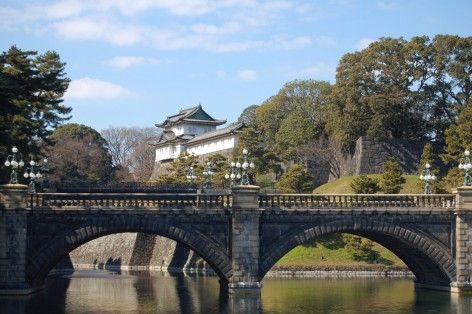Responding to the contemporary reality – The role of arts and culture
[ text and photos GWEN SHARP ]
When I started working in the field of Culture almost 10 years ago, little did I think that I might get to work with people in my field in Asia. I mean, surely my work would just be with artists and perhaps even some cultural operators from this part of the world. I might possibly travel to Asia for my own personal reasons (in fact I have done so) – but the idea of having cultural operators from Asia in my work community was not really something I considered, mostly probably because it was too far away and a bit too different. But then I had the amazing opportunity to take part in the TPAM (Performing Arts Meeting) in Yokohama, Japan, last February and a chance to test my cultural practice and reality in another environment.
TPAM defines itself as a place for meeting, consisting of a discussion and presentation section for the improvement and development of activities in the performing arts sector through networking professionals. It also has a performance section for discovering and introducing works that are responsive to the contemporary reality. TPAM brings together cultural operators from Asia, but increasingly from the rest of the world and is currently exploring some European “models”, such as the IETM (International network for contemporary performing arts) network, and trying to implement something similar in Asia, while also aiming to develop cultural relations between Japan and Europe.
This last aspect of “responding to the contemporary reality” had a special echo during this particular edition of the meeting. Following the devastating earthquake that hit eastern Japan and the accident at the Fukushima nuclear power plant on March 11, 2011, a lot of questions arose. We’ve all read and heard in the media how the Japanese population at large reacted with such amazing dignity in the wake of this catastrophe; on my own very small personal level none of the people I met had the slightest complaint and everyone answered all my questions with extreme courtesy.
While recovery from the tragedies of the earthquake obviously had top priority, artists, cultural institutions and foundations have all been re-examining the meaning of international cultural exchanges, believing that through such exchanges Japan will be reignited by dynamism and a new sense of values, giving them the power to affect change. I was struck by this capacity to question themselves, their practices and their contemporary reality as it is something I keep trying to do, but sometimes forget, being swallowed up by daily routine. Many artists reacted immediately, through action. For example Kyohei Sakaguchi, an architect-writer-painter whom I met in Yokohama, moved from Tokyo to Kumamoto immediately after the nuclear plant accident and established the “Zero Centre” and “New Government” to take in refugees from the areas stricken by the earthquake and to totally reconsider the notion of “living”.
Another topic discussed at length during the TPAM and which also mirrored my own thoughts was the question of residency opportunities for artists. Artist-in-residence (AIR) programmes have developed in the fields of fine art, literature, music and, recently, performing arts. While the concepts of “global” and “local” are tending to disappear, it is expected that the artists build bases for long-term work over and beyond regional and national borders, and their determination to create has actually been making them move.
Furthermore, the development of diverse art forms requires them to overcome pre-existing linguistic frontiers and create new languages that are responsive to contemporary society, resulting in the need for time and space for ideas and creation. But in reality, does residency for artists meet this need? How do you make it challenging and effective? What is the responsibility of the artist towards the “community” wherever this refers to a group of interacting people living within a certain immediacy, or, regardless of any physical or geographical location, people sharing a common interest?
During this meeting, as it has been the case amongst European cultural professionals in recent years, concerns about the reduction of public support for the Arts due to the economic crisis and political reactionaries were voiced, and themes such as the “raison d’être” of art or what art can do were discussed. The need for such discussions is obvious, but the conclusion must be that art always exists, no matter how bad the situations are. What art and artists can do is not about the condition of art, but a question about what benefits society can draw from Art and culture. To conclude, I would like to quote Makiko Yamaguchi, the director of the Tokyo Culture Creation project.
While we were discussing how, in the end, cultural operators and artists face very similar questions and issues in most parts of the world, she said to me: “After all, the question is simple : it is about being open, or being closed”. I couldn’t agree more.
Gwendolenn Sharp – born and raised in France, has been leaving in Katowice for 7 years, where she works for the Cultural Institution Ars Cameralis as a Cultural and International projects manager. A passionate traveller, she sees herself as a facilitator, analysing and disseminating knowledge in the field of culture cooperation and policy development and building the network between individuals and institutions.
From BEDRIFT SUMMER 2012.



